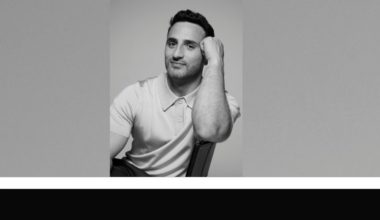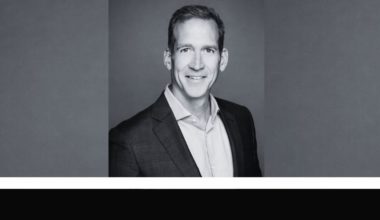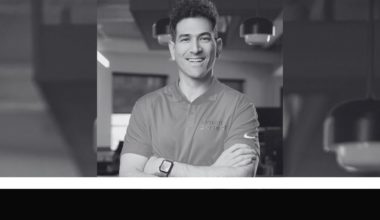Zafer Elcik was born in Eskisehir, Turkey, where he grew up and went to Eskisehir Anadolu High. After high school, he started his Computer Science major at Middle East Technical University, which is one of the most prestigious universities in Turkey. He was an outstanding student in all his studies.
When Zafer was 10, his younger brother Alper was diagnosed with severe autism spectrum disorder. Alper was 2 years old when he received the diagnosis. Throughout his life, Zafer had the opportunity to discover what autism is and how to educate a child on the spectrum. He had lots of conversations with his brother’s teachers where he consistently discussed new methods on how to teach Alper.
As Zafer learned further, he discovered that Alper was actually able to focus on smart devices at least five times more than the rate he normally can. Then he decided to change the mobile industry of education for children with learning or developmental disorders. With his co-founder, Zafer developed Otsimo, a gamified educational app to democratize special education and speech therapy for children with special needs.
To this day Otsimo has reached 350k+ children in 217 different countries. It has a total of 350+ educational games and is producing material for special needs children in every field. Most recently, for Autism Awareness Month 2021, they have released a brand new AAC module for non-verbal children with 1700+ unique cards.
What is Otsimo all about?
My brother was a lucky child because when he was first diagnosed, we were able to provide him the intensive and early education he needed, like all children with autism. Today early intervention special education is neither easily accessible nor affordable for families with average income. This contradicts the fact that one in every 54 children is diagnosed with autism spectrum disorder. You would assume with so many children with autism, there should be reinforcing systems, but there really aren’t any.
With my co-founder, we wanted to build that reinforcement that would be accessible and affordable. Simply put, we wanted to democratize education for all special needs children. Otsimo is all about gamified educational content on smart devices with 350+ exercises to improve motor, cognitive and communication skills of children. It includes maths, reading and writing practices as well as a separate application dedicated to speech and language therapy. All of our content is based upon improving the core skills of children and expanding their vocabulary, especially on the everyday objects around us.
Tell us a little bit about your background and how you started your company?
My brother, Alper, was diagnosed with severe autism at the age of two, and I was 10 at the time. Starting this journey wasn’t easy because nothing was going to be the same, but my family adapted quickly and we figured out our way around special needs. I learned so much even as a child, throughout the process.
I was on another journey myself. I wanted to be able to teach my little brother something, any improvement in any skill was a major spark. I was in university when I realized Alper was on my smartphone for about 45 minutes, five times longer than he’s usually able to focus during his intervention sessions. This was it. He was curious. Smart devices might have been the correct instrument to teach him. After doing a little research, I found nothing designed for a child with autism. With what I have learned in computer science so far, I felt the urge to at least try to develop a basic match-and-learn app with a close friend of mine. It’s been five years since and now here we are, supporting special needs children on their special education journey with carefully designed content for them and informational content for their parents.
What was the biggest problem you encountered with your business and how did you overcome it?
The hiring process. It was and still is one of the biggest problems we face regularly. I strongly believe that founders of a newly established company should hire ambitious and young people who are open-minded and open to learning. Then we should leave the stage to them. Because that’s how you lower the risk of losing members of your team. You make the product theirs as well and provide non-stressful conditions. You give them space to innovate and inevitably you get to improve your initial product more than you could have by yourselves.
While I always worked hard to find great teammates, I also try to be a good teammate. I try to make the workplace an environment my team enjoys spending time in. I try my best to avoid losing talent, but sometimes talent leaves us and this goes hand in hand with the difficulties that come with the hiring process. You just can’t have it all. My method resembles more of a trial and error in these, but the goal is to learn and make good connections with good team members.
What were the top mistakes you made starting your business and what did you learn from it?
Our biggest mistake was assuming that experts and specialists knew better about what the consumer wants.
Almost every entrepreneurial advice directs you to the customer. “Understand your consumer, what do they need and how can you provide that.” When we were starting the business, we went to the experts and worked with them to produce a solution for families to use, without asking the families or caregivers. So, the first version of the application cost us our effort and time because we did not talk to the people who were actually going to use the product.
What we should’ve done first was to ask the parents, families, caregivers, and teachers what they needed. Then, we should have gone to the experts and worked with them to design the best product that we knew was going to cover the needs.
What is one thing that you do daily to grow as an entrepreneur?
I listen. I spend time understanding the wants and needs of my team. I listen to my mentor, our investors and as mentioned previously, I listen to our users. Listening does not always mean you have to act on what you discussed or what people shared with you. Because although I believe I am a problem solver, I can’t solve every problem. But, you can make people feel heard. You can pay attention to their thoughts and opinions.
Another point is that our work does not come with a guide. Although I read a lot, I can’t choose and implement the methods I think might help in the works I study. There are other factors affecting these method’s probable outcomes such as cultural differences. So, the emphasis remains on listening for me.
What are three books or courses you recommend for new entrepreneurs?
- Malcolm Gladwell’s Tipping Point – Above all, this book gave me hope. It’s about all of the little stuff you think is not contributing to business but actually builds up and helps you reach a threshold where you feel that all your efforts have finally paid off. What an entrepreneur need is hope.
- Dr. Dan Ariely’s Predictably Irrational – This book teaches you about consumer behavior and the ability to analyze it. Another benefit I received from Predictably Irrational was with the pricing strategies.
- Simon Sinek’s Start with Why – This book especially applies to our company because it puts the emphasis on empathy. It starts with empathy.
What is the one thing you wish you knew before starting your business?
Very simply put: the importance of the team and communication within the team. In business schools, they tell you investors will prefer working with an A-team with a B-idea instead of a B-team with an A-idea. That’s how important the team is. But, even if you have a great team, you need to have a healthy information flow and communication. Since you will have a small team, communication is key for a product you will all work for. I need to trust my team to build on what we have discussed and agreed upon. Otherwise, we will lose time, effort and maybe even some opportunities.
What has been your most effective marketing strategy to grow your business?
Creating a product that could grow organically and generates customer loyalty. This is a very well-known concept today called inbound marketing. You design a product that will create value for your end-user. Then you also pay attention to the side benefits. In our case, we offered a blog that people can trust and come back to, knowing that we try to create value for them outside the business as well. However, this comes with its challenges. Organic growth is a very slow growth at the beginning and this causes doubts. I believe in the tipping point though, no matter how small, things add up.
If you only had $1000 dollars to start a new startup, knowing everything you know now, how would you spend it?
- My goal would be to validate an idea to raise seed funding:
- Make a list of the problems around me. Find 5 of them.
- Come up with one probable and applicable solution for each of these problems.
- Start the free trial of a tool I can build a landing with like Unbounce or Wix where I will build 2 landing pages for each of the solutions.
- Here’s the most important part: do a price test with these landing pages I prepared for the solutions. Also, make sure to add a redirection to a platform so I can collect information of my customers.
- Invest $100 for each landing page in Facebook Ads, which will be the total of my budget.
- By now I have tested 2 different prices for 5 separate problems and solutions. Now, I will look at the data I have collected and I will pick the option with the lowest CPC (cost per click) with the highest rates of customer won.
- Prepare an investment deck for the option I’m moving forward with.
- Go raise seed funding.
What is your favorite quote?
“A mighty flame follows a tiny spark.”
– Dante
This is what I aspire to achieve with my work. I believe most of the readers would agree with me when I say, it starts with only one. In Otsimo’s case, we’re trying to make intensive and early special education accessible for all children with special needs, and it started with me. In 2016, we founded the company because our attempt to teach my brother some colors was successful and we knew that there were other children who could also benefit from this initiative. It started with my brother and today we have 350,000 children using our applications. Every week, we receive thank you emails from families and caregivers about how our apps have contributed to children’s development.
How is running a tech company different than what you thought it would be?
I had different expectations on how the monthly growth should be. I thought we would be like Insider and grow aggressively. And this is actually a choice founders can make so we tried aggressive growth. However, this required a very fast response in all aspects and brought high turnovers on the human resources side of the business. After realizing how it affected the bonds and feelings of my team, we changed our perspective and chose to invest in the team for the long-term outcomes.
How can readers get in touch with you?
The readers can reach me at zafer@otsimo.com
Entrepreneur Interview: Danielle Hu: Digital Nomad & Founder of The Wanderlover








